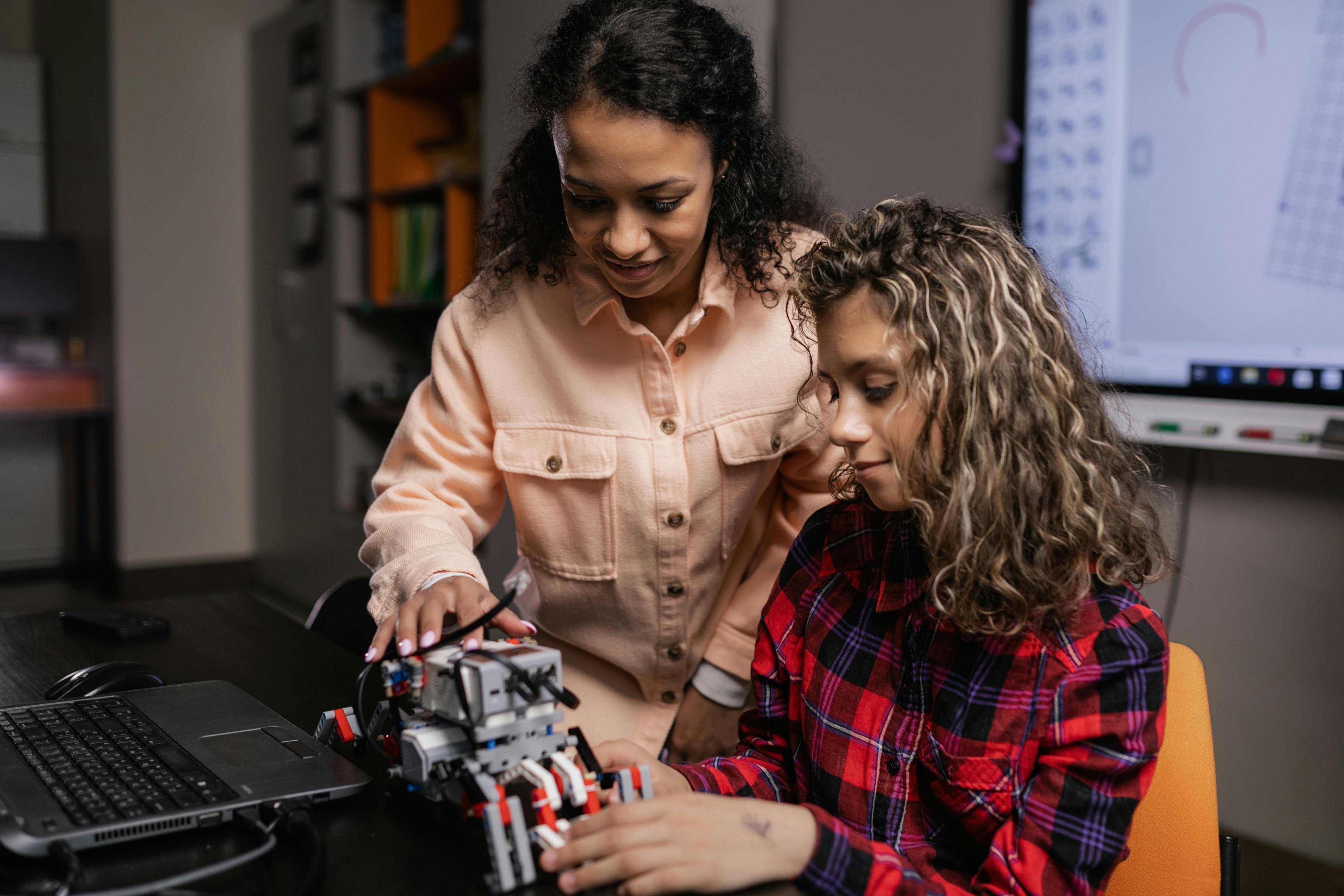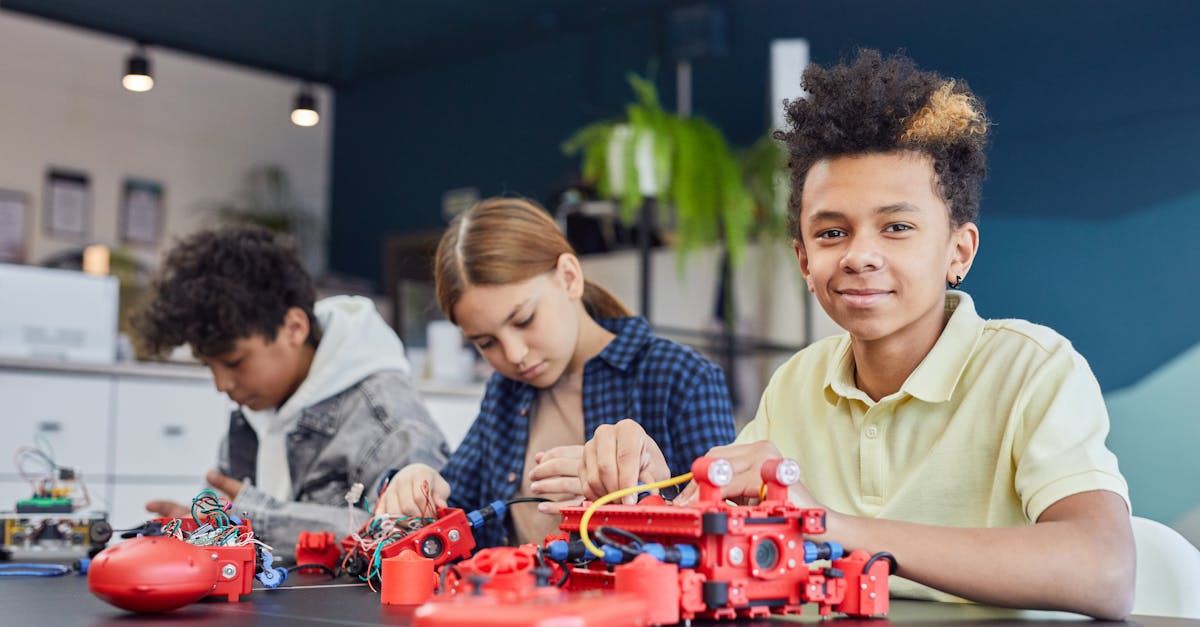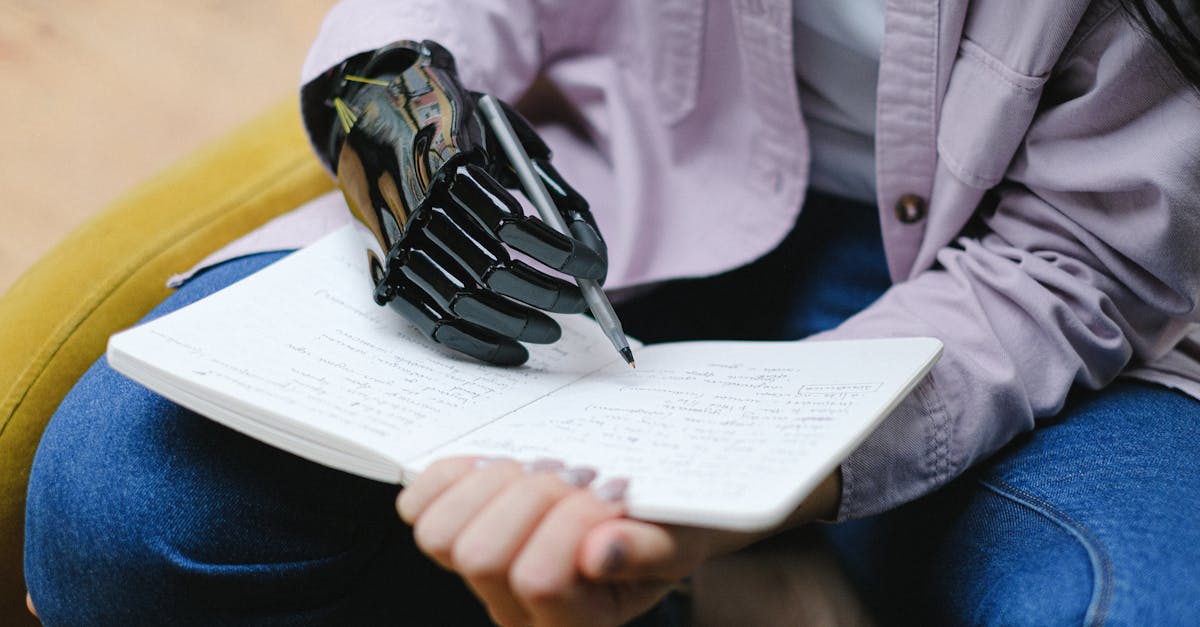Introduction: An introduction
Combining robotic technology with artificial intelligence (AI) is revolutionizing education. These advancements are changing the way teachers educate and students learn by putting effective and individualized solutions front and center. Thanks to these state-of-the-art technologies, the educational scene is expected to see tremendous progress by 2024. This paper examines five key developments that demonstrate how robots and artificial intelligence are affecting education.
Personalized Learning Driven by AI
Personalized learning experiences made possible by AI are among the most well-known trends. Artificial intelligence (AI) powered systems customize instructional material by analyzing a student’s learning style, talents, and shortcomings. This tailored method raises academic achievement and student involvement.
Customized lesson plans are made possible, for instance, by adaptive learning algorithms seen in systems like DreamBox and Smart Sparrow. These resources keep students motivated by posing problems appropriate for their skill level and also help them comprehend difficult subjects more fully. Personalization enabled by AI is predicted to become a basic element of contemporary education, according to a Chronicle of Higher Education article.

The Robotic Teaching Assistant
Robotic teaching assistants entering classrooms is another fascinating trend. These robots are made to help teachers by doing standard duties and offering extra help to the students. This frees up educators to concentrate more on engaging and innovative teaching strategies.
Quizzes can be given by robots, classroom activities can be managed, and even small group tutoring can be done. As recent developments have shown, robots such as Pepper and NAO are being included into classrooms to provide a more dynamic and hands-on learning environment.
AI Transforming Educational Administration
Artificial intelligence is also transforming educational institution administration. AI technologies greatly lighten administrative staff and instructor workloads by automating chores like scheduling, grading, and student record management.
Businesses like Knewton and Brightspace, for example, are creating AI solutions to simplify these processes, which increases operational effectiveness and lowers expenses. The World Economic Forum has pointed out that the capacity of AI to manage administrative tasks is proving to be revolutionary, allowing educational institutions to run more efficiently and freeing up teachers to spend more time with students directly.
Integrations of Augmented and Virtual Reality (VR/AR)
Immersion learning experiences resulting from VR and AR technologies are transforming conventional teaching approaches. Students can study more practically thanks to these tools, which can make difficult subjects more interesting and understandable.
From their classrooms, students can explore historical places or deep ocean trenches with virtual field trips made possible by VR systems like ClassVR. Similar interactive 3D learning opportunities are made possible by AR apps like Google Expeditions. VR and AR are expected to become commonplace tools in schools, encouraging interest and a better grasp of the material, claims Classpoint.io.

Robots and AI in Special Education
Special education benefits especially from AI and robotic technologies. For kids with particular requirements, they offer individualized help and chances for adaptive learning. Robots can help with learning and treatment by providing these kids with a steady and patient partner for interaction.
Leka and Milo are examples of tools made to use interactive games and activities to help autistic youngsters develop their social and communication abilities. These tools guarantee diversity and offer customized assistance, thereby enabling everyone to access education. According to United Robotics Group, robots and artificial intelligence are essential to establishing a welcoming learning environment.
Notes Summary
Robotics and artificial intelligence (AI) integration in education is revolutionizing the field and improving learning efficiency, inclusivity, and personalization. These trends only scratch the surface of how these technologies will influence schooling in the future. Education will only be more profoundly impacted by AI and robotics as they develop, providing fascinating opportunities for both teachers and students.





